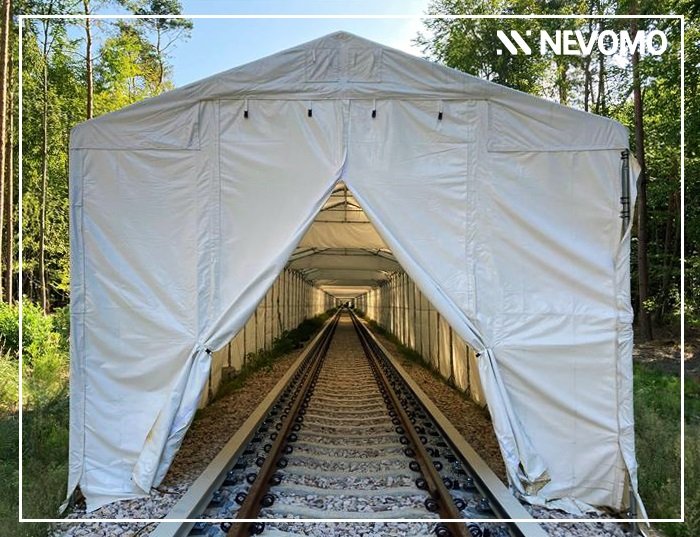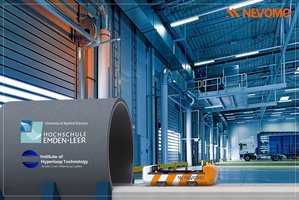Nevomo ready to start testing MagRail technology on the test track in Nowa Sarzyna, Poland
02.09.2022In the first quarter of this year, Nevomo completed the construction of railway infrastructure on Europe's longest track for testing passive magnetic levitation. The 700-meter-long railway track, which allows levitating railway vehicles of the MagRail system at testing speeds of up to 160 kph, was built on the premises of CIECH Sarzyna in Podkarpackie voivodeship in Poland. The installation of all the necessary wayside equipment, allowing testing of magnetic levitation, among other things, has been recently completed. The first full-scale test vehicle, equipped with all the necessary components to perform the first tests, was delivered to Nowa Sarzyna last week.
We are very happy that despite difficulties in the supply of key components of the MagRail system, caused by the disruption of global supply chains, we are ready with almost all the necessary elements of the system before the end of summer. We have both a fully completed wayside and trackside infrastructure ready for magnetic levitation, as well as a full-scale test platform. We are currently finalizing the system's power supply and we cannot wait to start testing soon – said Lukasz Mielczarek, co-founder and Infrastructure Director at Nevomo.
MagRail technology was developed to easily, quickly, and cost-effectively extend the capacity and enhance the capability of existing railway lines, as well as improve the overall efficiency of the rail transportation system. MagRail provides the possibility to operate electric vehicles in non-electrified areas, such as terminals and ports. The MagRail system can be integrated into existing railway systems. As a result, the traditional rail transportation system can gain better freight dynamics, higher loading limits, greater flexibility, and the ability to run trains automatically without the need to build new lines, without catenary, and without human error.
The project in Nowa Sarzyna is co-financed by the European Union from the European Regional Development Fund under the Intelligent Development Programme. The project is implemented under a grant from the National Centre for Research and Development called Fast Track.
 go back
go back
More articles
Nevomo and Captrain launch globally first MagRail Booster: an automated rail service in a German steel factory

MagRail Booster a solution to freight challenges in the CEE region

Institute of Hyperloop Technology selects Nevomo's MagRail technology for its “CargoTube” high-speed freight demonstrator

